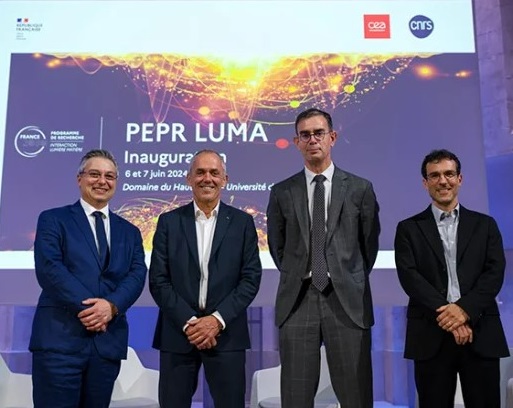The PEPR LUMA research programme develops light-matter interactions, particularly in the following applications:
- optoelectronic technologies (information processing and storage)
- sustainable materials (green chemistry, recycling, eco-design)
- energy exploitation (solar energy conversion, photocatalytic devices)
- Photomedicines (non-invasive methods, photodynamic therapy, cancer treatment).
The LUMA programme is structured around several key actions:
- Thematic research in four areas: chirality, photochemistry and materials, energy and the environment, and health.
- The creation of a national cluster of platforms, comprising two infrastructures:
Ultrafast dedicated to ultrafast photoscience and the nano-structuring of matter by laser;
- and
Operando/Prototyping which brings together characterisation and analysis instruments, as well as equipment for the study and prototyping of photoactive materials and the conversion of solar energy.

Photo 1: the General Administrator of the CEA on the day of the inauguration. From left to right: Catalin Miron, Antoine Petit, François Jacq and Rémi Métivier © Gautier Dufau / CNRS / CEA.
The following projects are being carried out at IRIG:
- The Molecular Systems and Nanomaterials for Energy and Health Laboratory (IRIG/SyMMES) manages a time-resolved electron spin resonance (ESR) spectroscopy platform using a rapid scan coupled to a laser, dedicated to the study of paramagnetic species involved in light energy conversion processes (photovoltaics, photocatalysis, etc.).
- Murielle Chavarot-Kerlidou (IRIG/LCBM) and Philip Gotico (CEA-Joliot) are leading the Moonshot project SYNFLUX-LUMICALS to develop photoelectro-catalytic systems for the production of solar fuels. This nature-inspired approach aimed at better understanding controlling and synchronising reactions ranging from the absorption of photons to the creation transport and use of charges across hybrid interfaces.